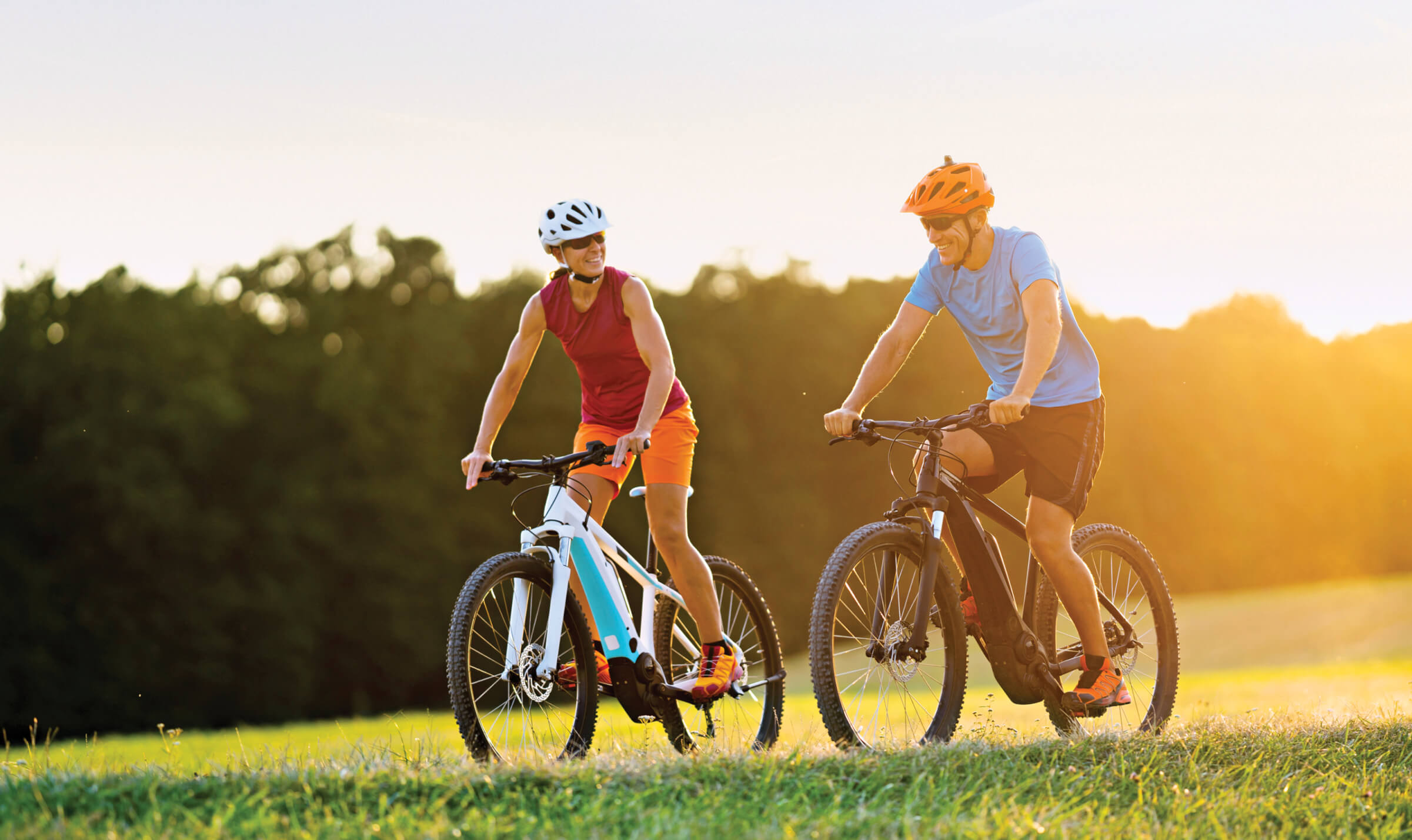UPFRONT/GO
Faster, Easier, More Dangerous
Electric bikes are popular, but their speed and weight make injuries a concern

IN KEY Biscayne, Florida, a 12-year-old on an electric bike crashed into and killed a 66-year-old bicyclist in February. That sparked a 60-day ban on e-bikes; town officials even considered outlawing them permanently.
In California, lawmakers were considering a statewide e-bike ban for kids under 12 and requiring a license for those 12 and older.
Such recent events call into question the safety of battery-assisted bikes, which older riders find appealing for making cycling less strenuous. But it’s important to remember that e-bikes can reach speeds of up to 28 mph. “When people first hit the throttle, they tend to go ‘whoo-hoo!’ ” says Bill Klehm, CEO of bike maker eBliss. “So getting that ‘whoo-hoo!’ without getting into an accident is critical.”
SOME CONSIDERATIONS
1. Be careful getting on and off. The batteries can make e-bikes relatively heavy, and older riders have suffered injuries when the bike isn’t even moving, says Chris Cherry, a professor of civil engineering at the University of Tennessee, who focuses on e-bike safety.
2. It isn’t just like riding a bike. You may have learned to balance and pedal when you were a kid, but e-bikes handle differently. Don’t just hit the street. Practice by riding in a traffic-free area, like an empty parking lot, until you feel comfortable with the e-bike.
3. Practice turns and stops. It’s one thing to ride in a straight line. Making turns may feel different than you’re used to. And early braking will also be necessary at higher speeds.
4. Stay alert. It can be easy to fall into your own mental world when cycling. But in electric mode, be aware that others may underestimate your speed. Cherry says to try to make eye contact with car drivers. Some will be friendly, but you can expect “bad behavior” from impatient motorists. —Gary Greenberg